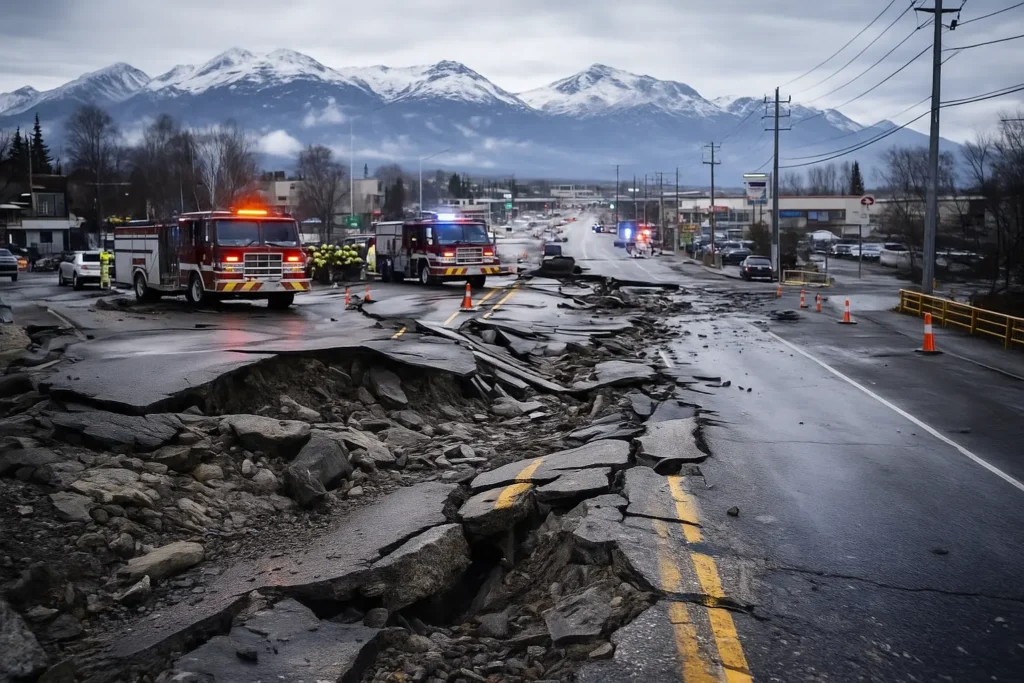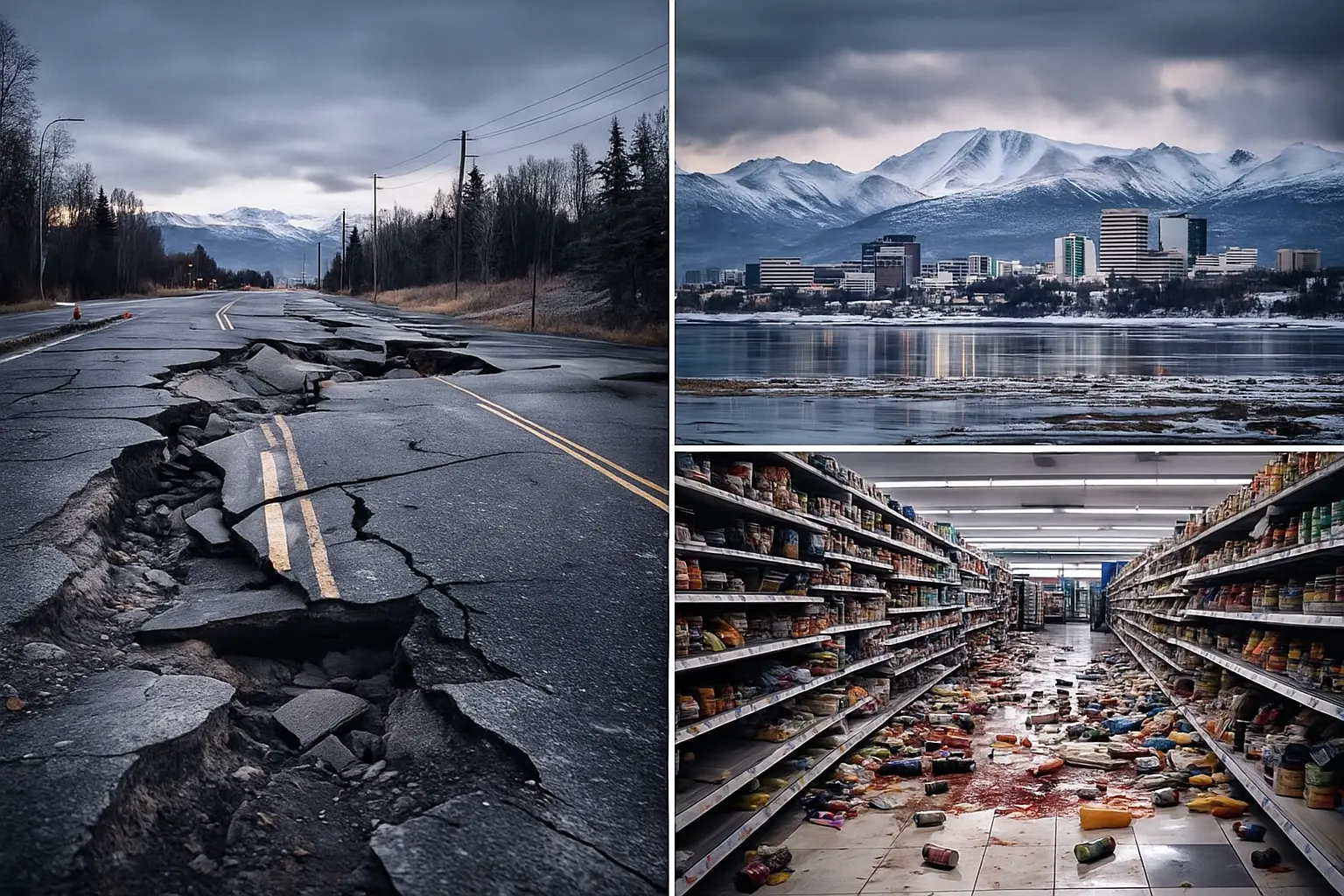A powerful earthquake struck Alaska and sent strong tremors across the Anchorage region. Scientists from the United States Geological Survey recorded this seismic event as the most forceful to hit the state since 2021. Communities across south central Alaska experienced several minutes of disruption as buildings shook, alarms sounded, and communication networks faced temporary slowdowns. Although the region is familiar with frequent seismic activity, the strength of this particular event has renewed public discussions about preparedness, infrastructure resilience, and long term seismic patterns.
According to preliminary data, the quake originated from a fault zone located south of Anchorage. The depth was categorized as shallow, which typically increases the surface level impact. Residents across Anchorage, Eagle River, Palmer, Wasilla, and coastal areas near the Cook Inlet reported intense shaking. Emergency lines received hundreds of calls within the first fifteen minutes. No major structural collapse was confirmed in the initial assessment, although several buildings displayed cracks in exterior walls and minor interior damage.
Transportation systems experienced short delays. Anchorage Airport paused operations briefly to inspect runways and terminals. Rail services between Anchorage and the interior corridor were halted for safety checks. Major roads remained operational, yet authorities warned motorists of possible loose debris. The state transportation department sent rapid response teams to examine bridges, overpasses, and key sections of the Seward Highway.

Local schools activated emergency protocols. Students were moved to open assembly areas until safety inspections were completed. Several institutions announced remote learning for at least one day to allow structural engineers to review facilities. Hospitals operated without interruption, though they experienced spikes in admissions related to stress, minor injuries, and anxiety induced symptoms.
Scientists noted that Alaska sits within the Pacific Ring of Fire, a region with frequent tectonic activity. The 2021 earthquake that previously held the record for strongest tremor in recent years had also occurred along a similar tectonic boundary. Experts highlight that this new event fits into a broader trend of recurring seismic stress in the region. However, they clarified that the quake does not necessarily indicate a major long term escalation. Instead, it reflects the ongoing movement of the Pacific Plate beneath the North American Plate.
Geologists are conducting detailed aftershock modeling to determine whether additional significant activity is likely in the coming days. Residents have already felt multiple aftershocks, some strong enough to rattle windows and alarm pets. Authorities advised the public to remain cautious but avoid panic. Emergency departments issued guidelines on how to prepare survival kits, secure home interiors, and respond during sudden tremors.
Anchorage Mayor’s Office commended first responders for rapid coordination. Fire units checked gas leaks and electrical faults. Utility providers inspected power lines to prevent hazards. Several neighborhoods experienced short power outages, but service returned within an hour. Internet and cellular networks faced brief congestion as thousands attempted to contact family members simultaneously.
CHECK THIS OUT – Earthquake Of 6.0 Magnitude Rocks Anchorage area Of Alaska
Businesses across the city reopened within a few hours, although some shops remained closed for assessment. Major shopping centers conducted structural evaluations before reopening. Tourism operators reported cancellations for adventure tours and sightseeing trips. However, local authorities emphasized that the region remains safe for travel once inspections conclude.
The federal government has been notified, and agencies are ready to provide support if statewide resources become insufficient. As of now, Alaska officials indicate that the situation is under control. They stress the importance of continued monitoring of buildings that house sensitive equipment such as laboratories, fuel facilities, and water treatment plants. These structures require careful assessment due to potential vulnerabilities.
Residents shared firsthand accounts through social media. Many described loud rumbling sounds followed by violent shaking. Others mentioned that the tremor felt longer and stronger than typical quakes in the area. Video clips showed swaying light fixtures, vibrating furniture, and startled individuals seeking immediate cover.
The quake has also prompted discussions among engineers and urban planners about earthquake resistant architecture. Anchorage has modern construction codes that mandate reinforced frameworks. Nevertheless, the intensity of this event may encourage updates to existing standards. Experts argue that continuous improvements in building design remain essential for regions situated near active tectonic zones.
ALSO READ – East Coast Heatwave 2025: Record Temperatures Scorch Eastern U.S. Cities
While the community recovers, government departments continue data collection. Seismic stations positioned across Alaska will refine the magnitude and pinpoint the exact rupture length. This data will support future risk mapping and research initiatives. The event serves as a reminder that Alaska, despite its preparedness, remains highly vulnerable to geological activity.
Overall, the powerful quake delivered a significant shock to the Anchorage region, yet early reports suggest that the combination of modern infrastructure, swift emergency response, and established safety protocols helped prevent extensive damage. Continued assessments and aftershock monitoring will determine the full scope of the impact.







